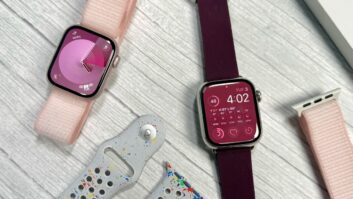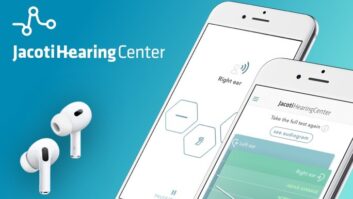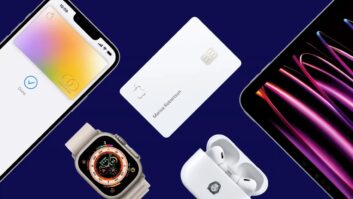San Francisco – Apple positioned its long-awaited mystery product, the iPad media tablet, as a media-consumption device that bridges the gap between smartphones and laptops and does more than a netbook, which it disparaged as a cheap, slow laptop with a bad display.
Early opinions among marketers and analysts are mixed about the iPad’s potential, with some saying it will appeal mainly to Apple acolytes, and others saying it will capture share from potential netbook and e-reader buyers despite prices that exceed those devices.

The 0.5-inch-thick, 1.5-pound iPad features 9.7-inch LED-backlit color LCD touchscreen and no hard keyboard other than an optional keyboard-equipped tabletop dock that also charges the device. The device features Apple’s 1GHz A4 processor, stores and plays back audio and video like an iPod Touch or iPhone, runs almost all 140,000 iPhone/iPod Touch apps, including games, and downloads soon-to-be-available apps specifically designed for it. It will also store high-definition video.
The iPad will use Wi-Fi 802.11n or AT&T’s 3G cellular network to access the web, access email, and download content. It also doubles as an e-book reader, downloading $7.99-$14.99 books wirelessly in the industry-standard ePub format from five major publishers. The publishers are Penguin, Harper Collins, Simon and Schuster, MacMillan, and Hachette’s book group. The New York Times also plans to deliver its newspaper to the device with color images and video.
Three productivity applications, each optional at $9.99, will lets users create spreadsheets, word processing documents and slide presentations using the device’s capacitive-multitouch touchscreen and a near-full-size virtual QWERTY keyboard.
Battery life was promoted at 10 hours, which Apple established by browsing web pages and receiving email over an AirPort Wi-Fi network with the display at half brightness and without letting the system go to sleep, the company said.
The device will be available in six versions. Three will be Wi-Fi-equipped models at $499 (16GB), $599 (32GB), and $699 (64GB.) Three iPad 3G models will incorporate 7.2Mbps HSDPA cellular data as well as Wi-Fi. Those variations will be available with the same memory capacities as the Wi-Fi-only models but cost $130 more at $629, $729, and $829, respectively. They lack cellular voice capability.
Unlike the iPhone, the 3G versions will be sold with prepaid data plans, eliminating the requirement to sign a two-year AT&T contract. The data plans will also be less expensive than iPhone data plans, with a 250MB plan going for $14.99 and an unlimited plan going for $29.99/month, including free AT&T Hot Spot service. Like prepaid phones sold with prepaid voice and data plans, the 3G models apparently are not carrier-subsidized, analysts said.
The Wi-Fi models will be available in late March in the U.S. and worldwide, and the Wi-Fi+3G versions will be available 30 days later in the U.S. and select countries. E-books will be available at launch. International pricing will be announced at a later date.
In the U.S., the products will be sold through
, Apple’s retail stores and select authorized resellers. Apple didn’t specify whether AT&T-owned stores would sell the devices. On-device activation will be available.
Among analysts familiar with the device, the Yankee Group’s Carl Howe said the device would “absolutely” catch on. “The iPad bears the same relationship to a netbook that the original Mac did to DOS PCs,” he said. “It’s a complete rethinking of the reading and media-consuming experience. Apple’s full-color, full-motion device makes not only netbooks, but any product with an E Ink display, look tired and dated.”
Forrester Research analyst Charlie Golvin was less enthusiastic. “It will more likely sell to Apple acolytes,” he said. Although Steve Jobs views the iPad as a third category between smartphones and laptops, he said, “I don’t think this device will prove it.”
“A lot of people who had been thinking of e-readers or netbooks will likely stay with their plans because of the price point differences and different use cases,” Golvin continued. Although the iPad supports richer media, e-readers are a lot cheaper, more portable, and lighter, and they deliver longer battery life, he explained. For their part, a lot of netbooks aren’t robust enough to deliver a satisfying video experience, and they don’t play back HD video, but they do let users browse the web, get email, and engage in some productivity uses like an iPad, and netbooks are a lot less expensive, he said.
For his part, Strategy Analytics analyst Bonny Joy said Apple is essentially creating a new category and said such an effort will be a challenge. Coming in between a smartphone and a netbook, the iPad “might fill gaps in specific use cases,” but the challenge for Apple will be to “convince a broader market” of smartphone users “to buy a second device, especially given the price.” The iPad is not a substitute for a smartphone, whose main function is voice communication, he noted. Even if the iPad had cellular voice, its larger form factor detracts from its use as a voice phones.
One marketer optimistic about the iPad’s chances is Joe Cufari, marketing VP for cellphone/netbook supplier PCD. “All the research we perfomed over the past 12 months points at this being a hit,” he said. Consumers are looking for a lightweight device with 7- to 10-inch screen and good battery life to consume media on-the-go as well as in the house, he said. With a larger screen, consumers in any venue will spend more time viewing media than they would on a small-screen smartphone, he said.
E-book functionality adds to iPad’s attractiveness, Cufari said, as does the lack of a cellular contract for the 3G models. Consumers will be able to pay for 3G only when they need it, so even at $629 for the least-expensive 3G model, it’s a viable option for consumers who want to step up from a pure 3G-equipped e-book reader or netbook. The iPad will also lure people away from netbooks, which he described “low-price laptops without the iPad’s additional functionality,” which includes 140,000 apps with more to come.
On a related topic, despite complaints about the AT&T network’s performance, some analysts note that Apple would prefer its iPad operate on the AT&T network rather than on the Verizon or Sprint networks. That’s because AT&T uses the same 3G technology as the majority of carriers throughout the world, making it unnecessary for Apple to build separate SKUs for the U.S. and international markets, analysts said. They also note that Apple isn’t worried about the iPad overloading the network because iPad sales will be more modest than iPhone sales and that AT&T is offering free Hot Spot service with a 3G prepaid plan.













